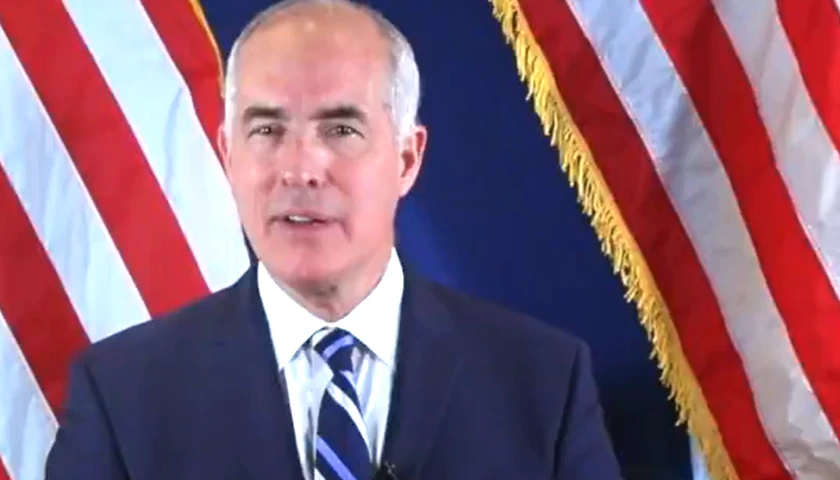by Anthony Esolen
The last time I was a member of an officially male group, I was 12 and in the Little League. After that, I shied away from them. There was a nearly all-male Catholic high school I earned a scholarship to, but I chose another school and another scholarship. There were still several prestigious all-male colleges to choose from, but I had no desire to go to those places. Princeton got me instead.
But as I look back and as I’ve grown more aware of what colleges used to be like, I wonder why we take for granted the superiority of having boys and girls, or young men and women, together everywhere and all the time. Shouldn’t there be at least some places that are otherwise? Here, one of the tenets of the progressive creed, that people’s sexual proclivities ought to be championed no matter what they are, is in flat contradiction with another one of the tenets, that all-male institutions are to be eliminated.
 For gay men say that they cannot possibly marry a woman after the way of nature. Unless we are talking about a fetish for a certain body part, what they must mean—whether they are correct is not at issue—is that the sex of the partner in a relationship is so powerful a bearer of meaning that to substitute a woman for a man is to change things utterly. The ambience is different; so also are the conversations, the pastimes, the spark of thought against thought, and so on. But ordinary people are also well aware of the phenomenon. Go to a party and watch as the men and women, for a while, tend to separate, just because it is comfortable to do so, not least because each sex finds quick and ready listeners about certain subjects among their own and not in mixed company.
For gay men say that they cannot possibly marry a woman after the way of nature. Unless we are talking about a fetish for a certain body part, what they must mean—whether they are correct is not at issue—is that the sex of the partner in a relationship is so powerful a bearer of meaning that to substitute a woman for a man is to change things utterly. The ambience is different; so also are the conversations, the pastimes, the spark of thought against thought, and so on. But ordinary people are also well aware of the phenomenon. Go to a party and watch as the men and women, for a while, tend to separate, just because it is comfortable to do so, not least because each sex finds quick and ready listeners about certain subjects among their own and not in mixed company.
There is nothing wrong with this temporary and provisional separation. What I can talk to my brother-in-law about over a game of pool is not the same as what I can talk to my sister about in the living room. I am sure she feels the same way. The question then is whether a natural kind of social organization should be reflected in at least some of our schools, or perhaps in some courses or clubs in otherwise coeducational schools, beyond the athletic teams, wherein the boys and girls are naturally sorted by physical prowess.
I confess, I do not know how to answer this question. The onus probandi rests with the innovator, and here I seem to be recommending something new, except that it really is something quite old, which was discarded not because it did not work but because of a trust in all things democratic and egalitarian on their inevitable march into the future. People failed to consider whether, to what extent and in what way the work done at single-sex schools and colleges was enabled or enhanced by the social structure. I am only asking that people reconsider what has been tantamount to obliteration. If they conclude that the obliteration was unnecessary and for at least some members of both sexes injurious, then my suggestion is but modest: some single-sex schools and colleges should be available for young people who would thrive in precisely those environments. That, it seems to me, shifts the onus probandi. Why should all schools have the same structure?
I am often made uneasy when I see the depth and care of scholarship to be found in professors at schools and colleges in earlier times. Many teenage prodigies came from those places, after all: James Clerk Maxwell and Thomas Carlyle (Edinburgh), Louis Agassiz (Munich), Henri Poincare (Nancy), and Immanuel Kant (Koenigsberg), just to name a few. Michael Faraday, whose family was too poor to send him to a prestigious school, got his learning as a teenage boy in part from attending meetings of the City Philosophical Society, in London. Evariste Galois was a 12-year-old boy when he went to the Lycee Louis-le-Grand in Paris, where his teachers inspired him with a love for the most sophisticated mathematics of the time; by age 15, he was reading works on the theory of equations by the great Lagrange. Something made such schools and societies so conducive to genius.
Then we get plenty of indirect but compelling evidence from letters, diaries, and incidents in the lives of young men that suggests a high level of competence in literature, a familiarity with intellectual movements or controversies, and, if such is their interest, an energetic entry into scientific or mathematical investigation. Their accounts seem to come from another world. Kermit Roosevelt, from his boarding school at Groton, wrote to the president, his father, about a poet he had met whose work he admired and who was looking for a job. He sent a sample. Theodore, besides being a politician, frontiersman, and soldier, was an author of considerable talent and agreed with his son’s evaluation, so he found employment for Edwin Arlington Robinson.
Or here is a portion of a letter home, handwritten and unedited, by the 19-year-old Harvard student, Horatio Storer, who would become the father of American gynecology. It describes an expedition to the Canadian Maritimes:
Guillemots and Puffins flying about all around, and the great sea gulls sailing just over our heads. The water was so transparent that we could see the bottom when many fathoms below in so that we really had to stop, impatient as we were to get ashore, and look for a long time at the sea urchins and shells so far down – well at last we landed and everything was new – all the plants alpine in their character just like those of the top of the White Mts – the crustaceans scattered everywhere over the rocks by the gulls – all was new. . . At last we found ourselves walking over the tops of a forest of fir trees and good stout ones too, and yet but a few inches high and so matted that we could drive a cart right over them all. Whilst here we visited some of those famous islands where so many sea fowl breed and I had to confess that Audubon’s description though promising so much yet falls far short of the truth. The boats went to them several times and we have had ever since eggs and birds in abundance and cooked in every fashion. . . I took Tiger with us and he had a capital time digging out Puffins ([illegible] arcticus) which burrow just like rabbits. We have got a lot of their eggs – they are new to our collections. Frank got an eider duck nest and eggs another time – and I find that the Razor-billed Auk (alca torda) breed in great abundance with the Murres (uria troile).
The firs young Storer was walking upon were not seedlings but mature trees, as he notes, and the sheer fun of the adventure seems in his mind to be involved with a real penchant for scientific exploration and classification. It is as if we have caught part of a long-lived conversation between him and his parents about the natural world.
So, what was the lifeblood of such schools? A certain esprit de corps? More ferocious but also friendlier competition? A synergy of wavelengths, so to speak? Freedom of speech? Freedom from the distractions of sex? I don’t know, as I can’t speak from experience. What were all-female schools like? I don’t know. Again, all I suggest is that we reconsider the wisdom of making all schools, in this regard, after one pattern.
– – –
Anthony Esolen is a reporter at Daily Caller News Foundation.
Photo “All Boys School” by Joe Shlabotnik CC BY-NC-SA 2.0.




